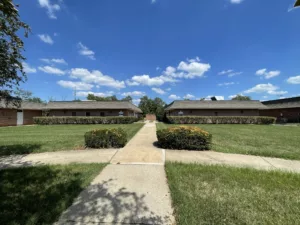Real estate investors are bound by the ultimate rule – location, location, location. But what many investors forget is that the local township comprehensive plan will help them find the best locations, making it so easy that it’s almost like insider trading.
Market knowledge and intel is the key to making good decisions in real estate investing. For example, I have a friend who owned a farm next to a large industrial area in their township. On the most recent plan update, the township marked this area for future industrial growth, which made a change in zoning from agricultural to industrial much more feasible. As a result, the value of their land went up considerably.
Understanding What Township Comprehensive Plans Tell You
Township comprehensive plans are long-term, strategic documents that outline the development goals and priorities of a local government. These plans typically cover a range of topics, including land use, transportation, housing, economic development, environmental sustainability, and public services. The primary objectives of township comprehensive plans are to manage growth effectively, improve the quality of life for residents, and ensure sustainable development.
Comprehensive plans are usually created through a collaborative process involving government officials, planners, community stakeholders, and the public. These plans provide a blueprint for zoning decisions, infrastructure investments, and public policy initiatives, making them a crucial resource for anyone involved in real estate investing or development.
Key Benefits of Researching Township Comprehensive Plans
1. Identifying Growth Corridors:
Comprehensive plans often highlight specific areas designated for future growth and development. These growth corridors may include new residential neighborhoods, commercial hubs, or mixed-use developments. By identifying these areas early, investors can purchase properties at lower prices before demand drives up the values.
2. Understanding Zoning Changes:
Zoning regulations play a critical role in determining how land can be used. Township comprehensive plans frequently propose changes to zoning classifications in order to accommodate future development needs. Investors who are aware of upcoming zoning changes can strategically acquire properties that will benefit from increased development potential.
3. Predicting Infrastructure Developments:
Plans typically include proposals for new or improved infrastructure, such as roads, public transportation, utilities, and recreational facilities. Proximity to planned infrastructure enhancements can significantly increase property values and attractiveness to potential buyers or tenants.
4. Assessing Market Demand:
Comprehensive plans often contain demographic and economic analyses that forecast population growth, housing demand, and economic trends. These insights can help investors target property types and locations that align with the projected market needs, reducing the risk of oversupply or mismatched demand.
5. Gauging Economic and Sustainability Initiatives:
Many comprehensive plans emphasize sustainability and environmental protection. Understanding these priorities can help investors identify properties that align with green initiatives and may qualify for incentives or enjoy increased appeal due to their environmental benefits. Additionally, these plans may help you to avoid investing in a piece of land that is likely to be a development challenge due to environmental protections in the future.
Practical Steps for Utilizing Comprehensive Plans
Step 1: Accessing Comprehensive Plans
Start by obtaining the comprehensive plans of the townships or municipalities where you are considering investing. These documents are usually available on local township or borough websites, or through planning departments. Some regions may also offer interactive maps and data portals for easier analysis.
Step 2: Analyzing Key Sections
Focus on the sections of the plan that are most relevant to real estate investment and development, such as land use maps, zoning changes, transportation projects, and economic development strategies. Pay close attention to the timelines and implementation stages to gauge the urgency and feasibility of the proposed developments.
Step 3: Engaging with Local Planners and Officials
Establish good relationships with local planners, zoning officials, and government representatives. These individuals can provide valuable context, answer questions, and offer insights that may not be immediately apparent from the documents alone.
Step 4: Monitoring Updates and Revisions
Township comprehensive plans are living documents that can and will be updated periodically. Stay informed about amendments, public hearings, and new versions of the plan to ensure your investment strategy remains aligned with the latest developments.
Step 5: Conducting Field Research
Complement your desk research with on-the-ground visits to the areas highlighted in the comprehensive plans. Observe the current conditions, ongoing projects, and community sentiment to validate your findings and gain a deeper understanding of the local context.
Example
Let’s say a township comprehensive plan proposes converting an industrial area into a mixed-use neighborhood with residential, retail, and office spaces. Early investment in properties within this zone can yield high returns as the area transforms and attracts diverse tenants.
Conclusion
Researching township comprehensive plans is a strategic practice that enables real estate investors to anticipate and leverage future growth opportunities. By understanding the long-term vision of a community, investors can make informed decisions that allow them to mitigate risk and position themselves for success in a competitive market.
Looking to reposition your real estate portfolio for future growth? Contact our advisors to discuss high growth areas in the Central Pennsylvania market.
Videos
Prefer to watch instead of reading a blog post? Watch Naomi’s video about township comprehensive plans!
For more information on selecting the right location for your property, check out these videos!






